Wax-based metallic paints like Rub n’ Buff are great for painting large quantities of terrain, and recently I decided to experiment with combining them with acrylics in order to paint some Munitorium Armored Containers. Terrain is a great opportunity to experiment with different techniques, particularly since in the end you can always slap more paint on it and declare it weathered. In this case what started off as an attempt to play with water-mixable oils turned into a fun discovery about weathering and chemically incompatible paints.
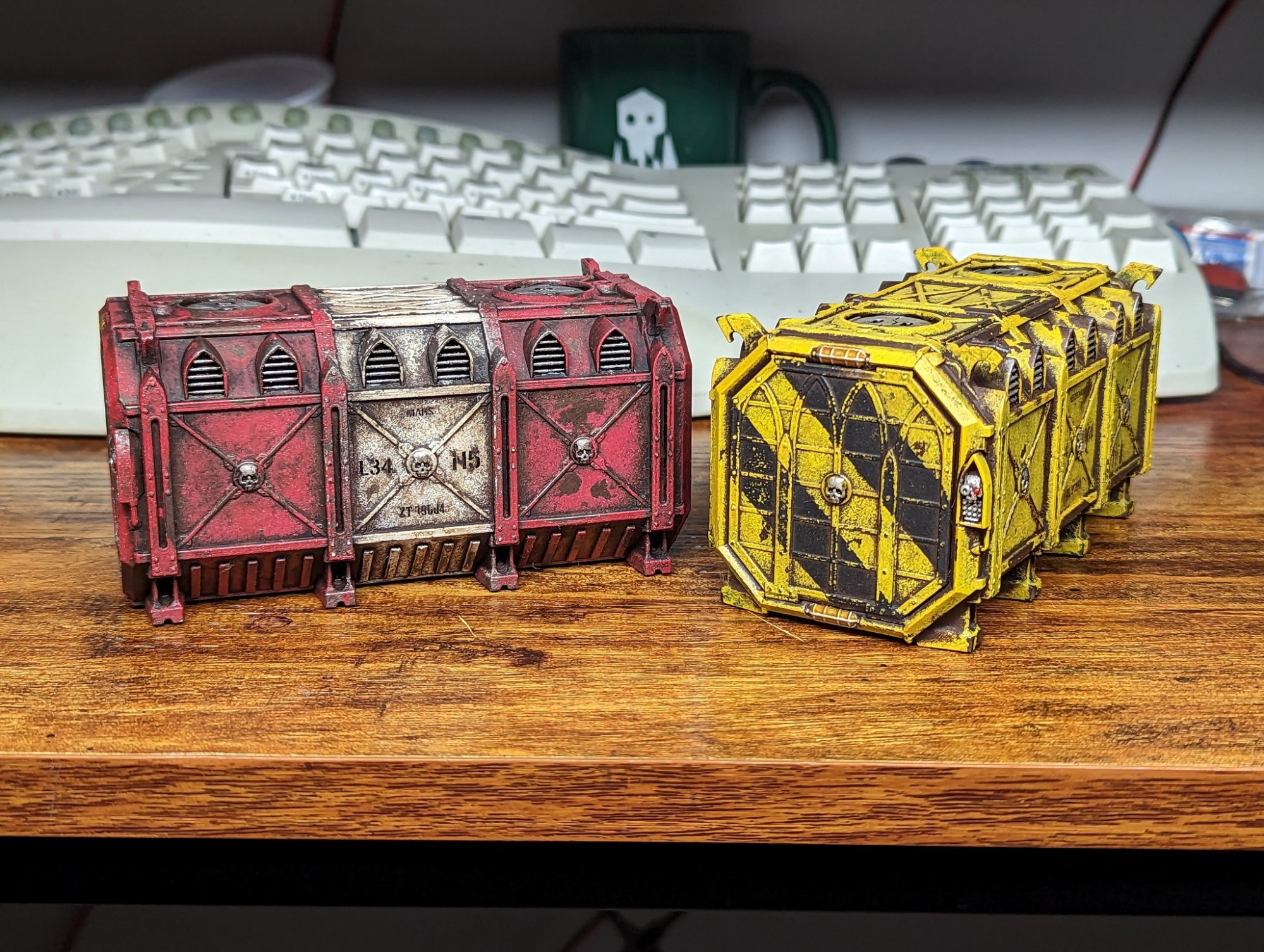
In short, this method uses a series of layers of different types of paints to create a heavily corroded and worn effect. The interplay of each layer results in varying levels of wear that are easy to control. The base layer is the material you want to be worn at the end, like a metallic steel, made using spray primer. Over that is a rust layer using wax metallic paint. Beyond that is your paint layer, which is sponged-on cheap acrylic paint. Finally the grunge layer is applied using water-mixable oil paints. When you subsequently use a wet rag to wipe everything down the different layers wear away gradually, resulting in a realistic and very fast weathering effect. This is similar to hairspray or salt weathering or the chipping medium method that Greg “Greggles” Hess uses to great effect.
Materials & Tools
- Metallic spray primer (Army Painter Gunmetal)
- Copper wax metallic (Rub n’ Buff Spanish Copper)
- Craft acrylic paint (Mondo Llama or Delta)
- Water-mixable oil paint (Windsor & Newton Burnt Umber)
- Sponges
- Cheap makeup brushes (e.l.f.)
- Wet rag
- Rubber gloves
Process
Start by applying a metallic spray undercoat. In this case I used Army Painter Gunmetal because that’s what I had lying around, but any metallic spray will likely work fine. You can also use something like a brown primer if you would prefer to have things look really corroded.

Next you use a cheap brush to cover everything with the wax metallic paint. A little tube of Rub n’ Buff Spanish Copper covers a lot of material, just make sure to use a disposable brush or have some mineral spirits lying around to clean the brush after you’re done. Because this is a wax-based paint the brushes won’t get clean with water.

Then sponge on the acrylic paint. Below is Mondo Llama Zesty Orange, although after a few layers I decided it was a bit too dark so I mixed in some white paint and added some variation. I’ve also had success using Delta paints. I suspect any water-soluble acrylic paint will work just fine.
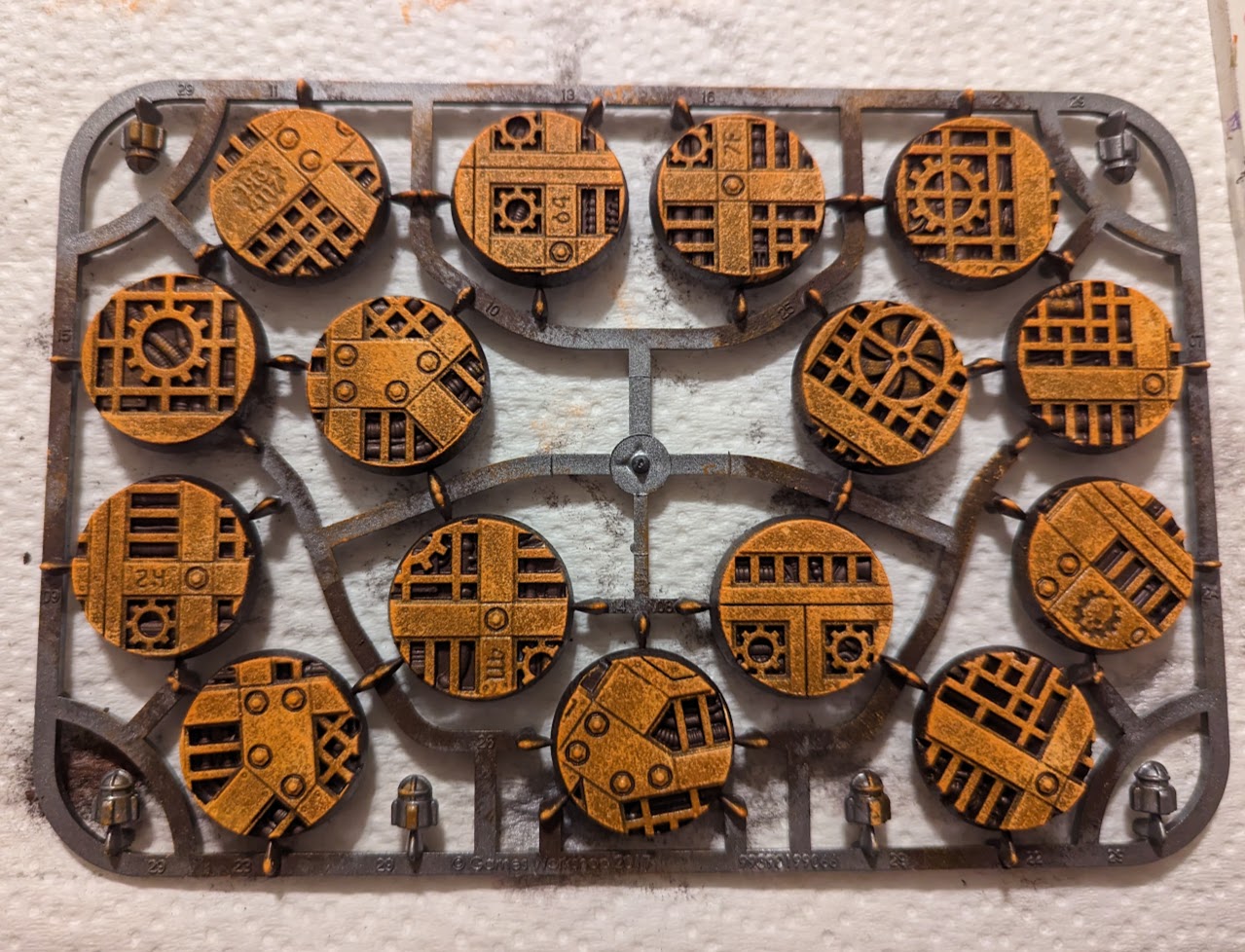
Next you slather on a layer of water-mixable oil paint. In this case I used Windsor & Newton Burnt Umber. Don’t worry too much about losing detail here, because most of it will get wiped away in a bit.
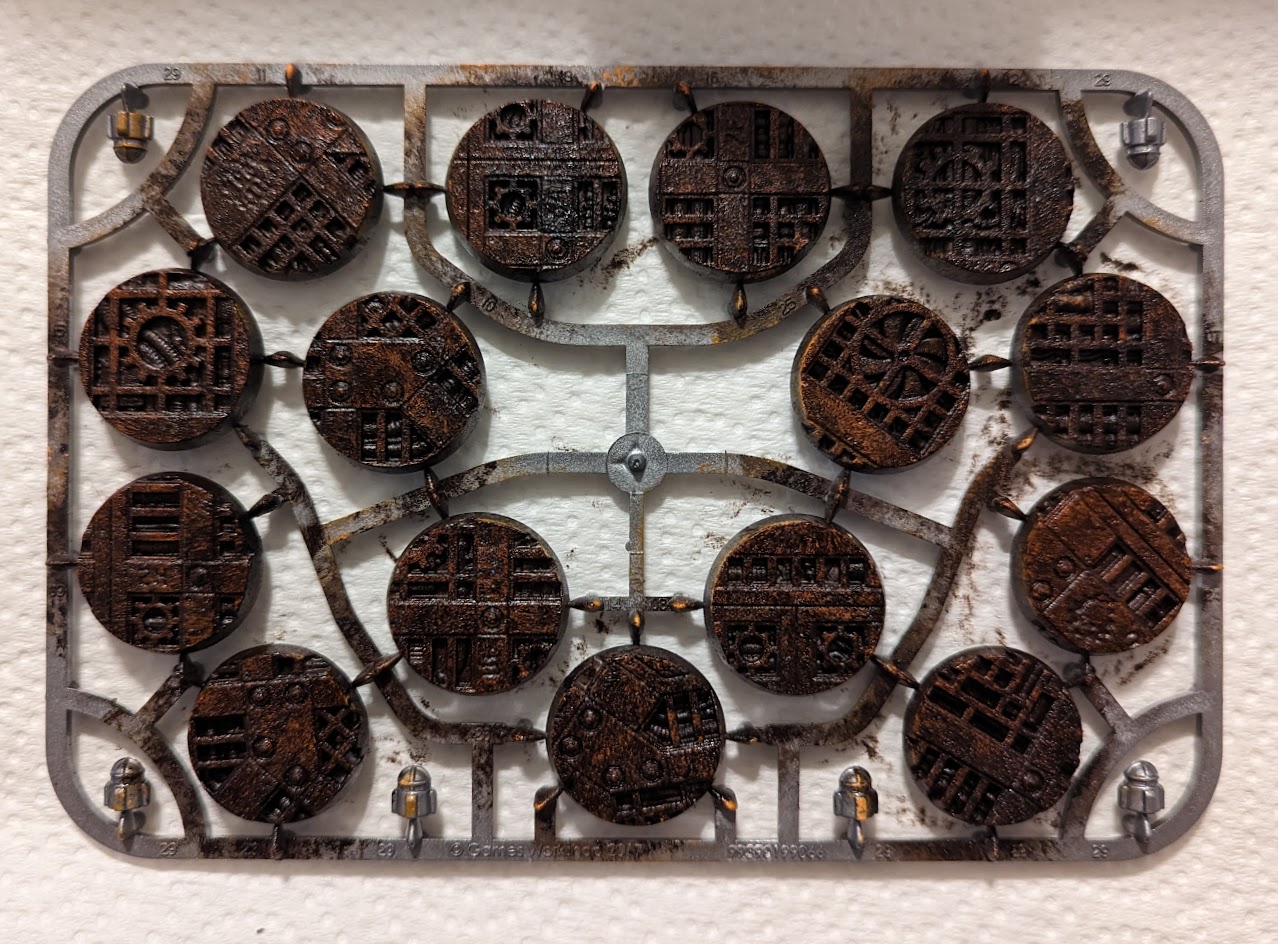
Now comes the weathering part. Put on some rubber gloves (if you didn’t do that when using the oil paint), and hit the entire thing with a wet rag. I’ve used paper towels but they tend to disintegrate, so something like a cloth towel might work better. You can also use tools and edges to scratch away the paint. What’s happening is that the water is softening the acrylic layer, which doesn’t really adhere very well to the wax paint layer underneath and so pieces of it slough off. The oil paint eats the wax paint layer, which causes the spray-painted metal layer to appear in the extreme edges. The water also thins the oil paint and leaves the highest regions exposed.
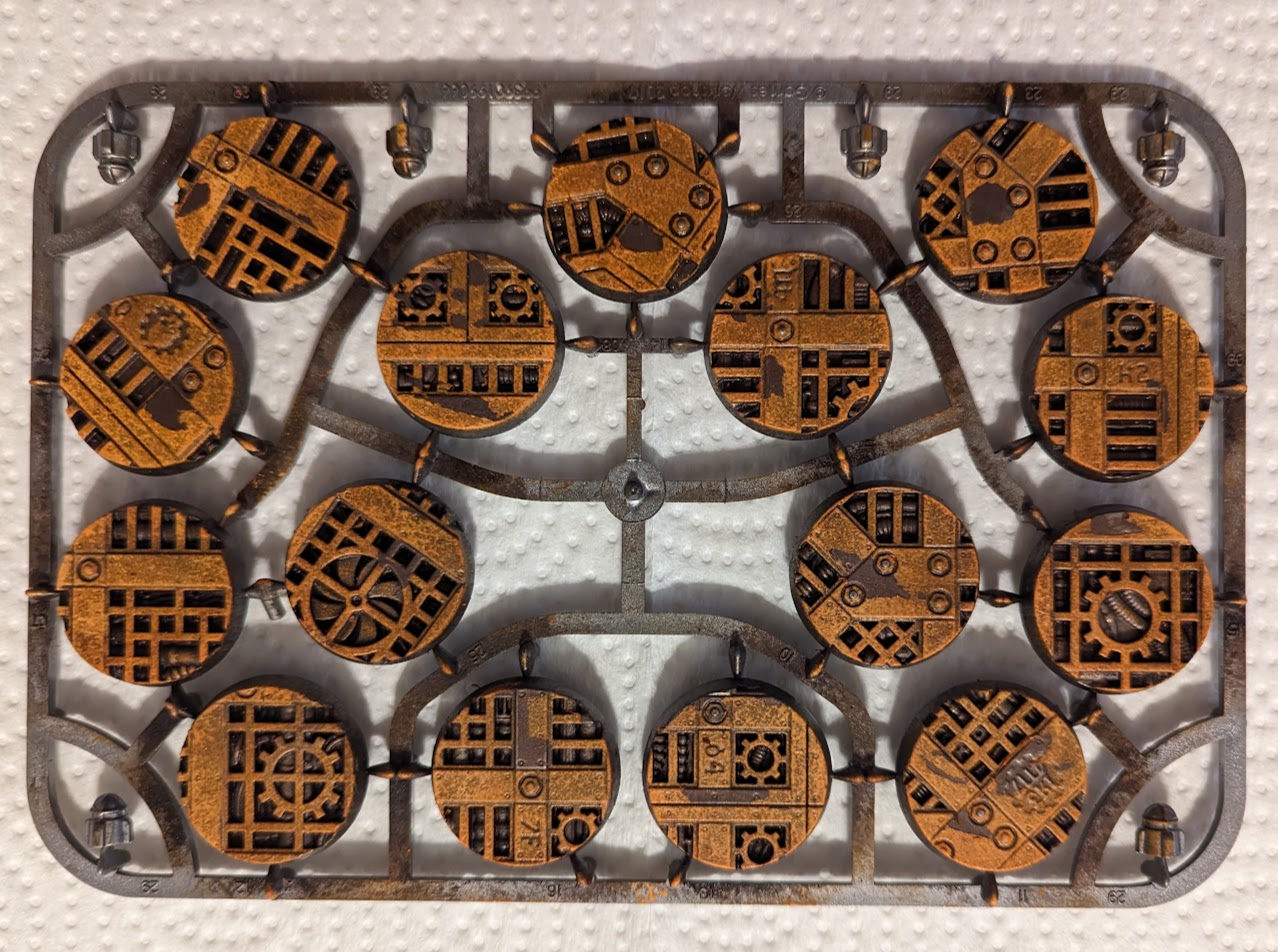
The final step is optional, but adds a little more contrast and weathering. Re-apply the oil paint, but this time wipe it off with a dry towel. This prevents the acrylic layer from coming off, but more aggressively attacks the metallic wax layer. This also can really accentuate the details, as shown in how must more distinct the numbers and the recesses around the depressions and bolts appear. Put the piece somewhere to dry and you’re done.
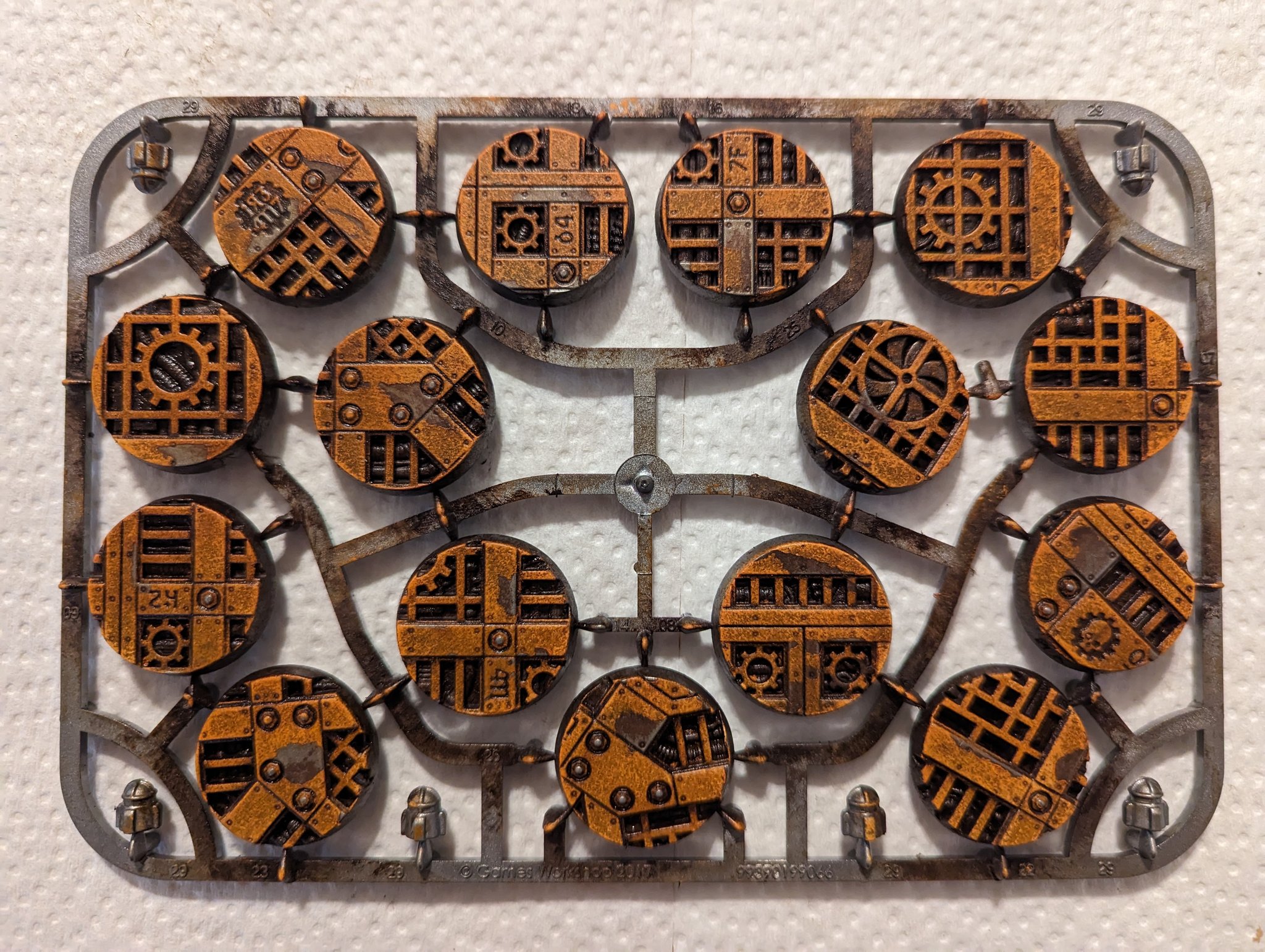
(Editor’s note – full drying times for water-mixable oil paints can vary widely. Dylan recommends a week, Fowler typically does four days, and Primaris Kevin says you can get cracking after 24 hours. Smaller projects tend to dry faster, and your mile may vary. It’s worth experimenting with your materials and seeing how they react!)
Extra Bits
There’s a lot you can do with this method. If you sponge one color of acrylic over another, it will wear away the top layer before attacking what’s underneath. This lets you get cool effects like the worn hazard stripes on the side of the armored container shown in the first image. If you want more controlled weathering you can stipple a wax metallic Spanish Copper and then something like a Pewter; this was done on the tips of the vents in the picture below.
For worn bare metal I started with a layer of Rub n’ Buff Pewter and then applied Games Workshop Gloss Nuln Oil. The wash dives into the recesses and provides a high level of definition. If you want the metal to look worn and corroded you can stipple some metallic acrylic paint over the wax metallic before applying the gloss wash. The wash will selectively stain the acrylic while leaving the metallic paint untouched, which has a pretty cool result.
One thing to be aware of with this method are decals. They can be applied between the acrylic and the oil paint, but it will prevent the material underneath from being weathered. You can address this by stippling Spanish Copper over the decal once everything else has been weathered, which will make the part look rusted and worn. You can also apply the decal after everything has been weathered, although I haven’t had any issues with them detaching after using Micro-Sol and Micro-Set.
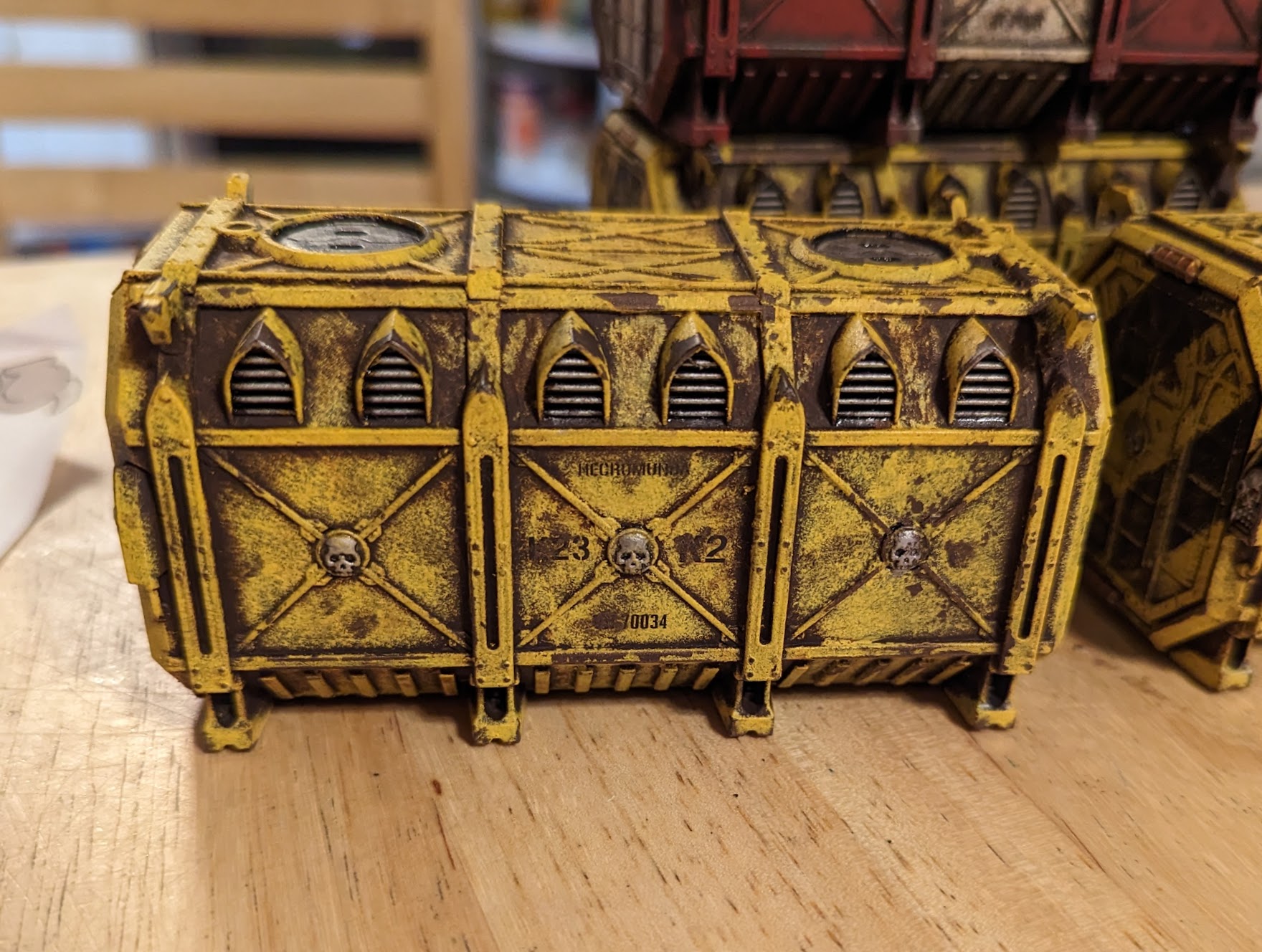
Have Fun!
While the high quality acrylic paints that we know and love for painting models are extremely effective, there are significantly more options out there that offer a ton of flexibility and effects. Seeing how well the results work has made me think about how I would use them for painting Ash Wastes terrain, or how it might be awesome for speed painting Necromunda vehicles (or Orks… or Genestealer Cultists). If you happen to use this method and discover something awesome, let us know! We’d love to hear from you.
Have any questions or feedback? Drop us a note in the comments below or email us at contact@goonhammer.com.


